Procedural text and tabletop roleplaying
In my last update I mentioned my (currently running) crowdfunding campaign for Downcrawl, a tabletop roleplaying game. TTRPGs may not at first glance have much to do with the history of interactive text games, but I wanted to talk a bit about how this new project connects to my older work and the larger tradition of interactive text.
Between the Gaps
One of the things digital text games with generative systems have historically been bad at is filling in the gaps between generated content. Say a system can generate eighteen types of monsters, one of which is a scorpion, and that it can give one of twelve modifiers to each monster, like ghost: it can certainly generate you a ghost scorpion, and know perhaps that it’s immune to slashing weapons and vulnerable to banishment magic.
But the gap between these words suggests all kinds of things to a human imagination, elevating this compound creature above the sum of its parts. Is ghost a metaphorical modifier or a literal one? If the latter, is a ghost scorpion’s stinger still poisonous, and in the same way? Why is this scorpion a ghost? Does it have unfinished business in the earthly realm? Does it have a soul? Do all scorpions? Is there a mystery here to solve, not just a monster to kill?
(We do of course now have generative AI systems which might attempt to fill in these gaps, but via a very different process nothing like the playful, curiosity-driven musings with which a human explores this space.)
Years ago in my own design work, I zeroed in on these productive gaps between words as an interesting place readers participate in what might otherwise be drily procedurally generated stories. My game 18 Cadence is all about these gaps: in it, you’re invited to build a story from existing texts, the meaning of which lies solely in the highly personal way you choose, position, and juxtapose those fragments. You can see shades of this idea as well in Ice-Bound or Hollywood Visionary, as well as (more directly) my earlier tabletop roleplaying game Archives of the Sky, where the player draws from a deck of words copied out from science fiction novels to resolve randomness, instead of rolling dice.
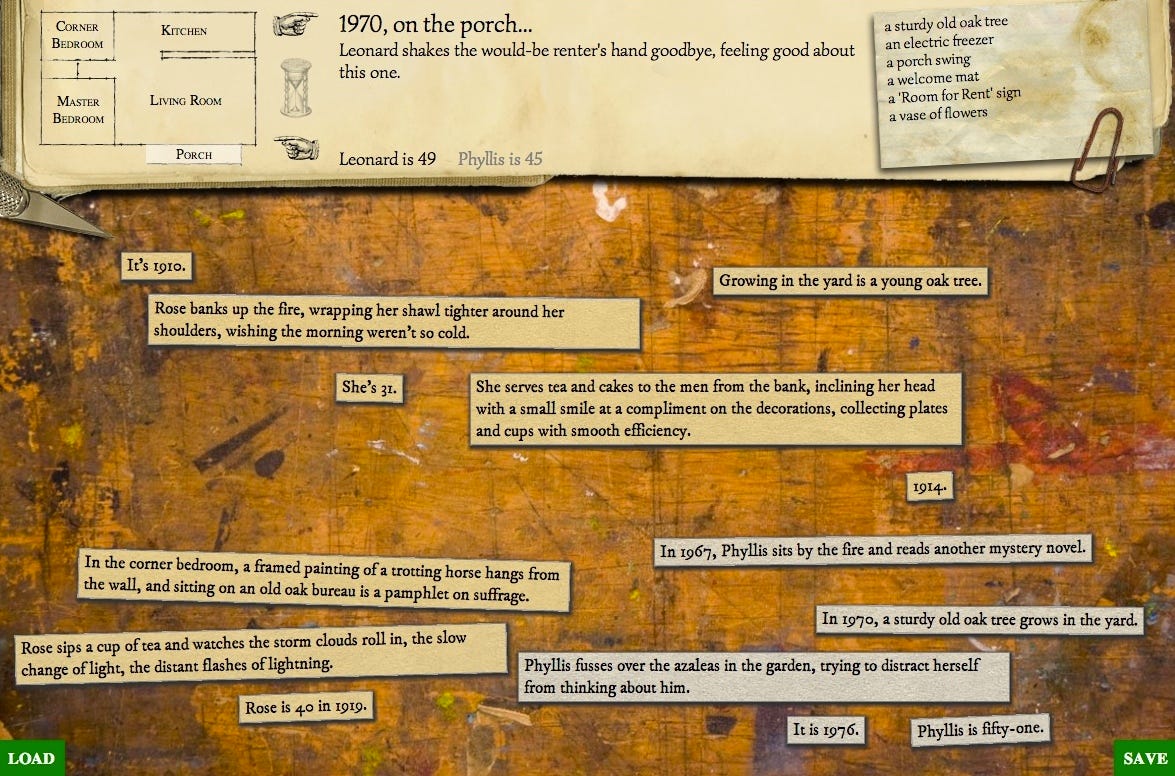
Downcrawl, my new project, is the second edition of an earlier game that hewed fairly closely to traditional roleplaying ideas. In particular, it assumed a single player (the gamemaster) would generate interesting places and adventures in advance of a session, for the other players to discover during play. One of the major changes in Downcrawl 2E is encouraging this generation to happen live during play. Nobody, including the gamemaster, knows in advance what’s around the next bend until you get there: when you do, you draw a card (or roll a die and consult a table) to get only the next piece of your story. You might learn that this volcano is haunted, or that it’s the home of angelic beetles, or sits on the shore of a great underground sea: and keep improvising from there until it’s time again for the system to nudge you in a fresh new direction.
(In my dissertation, I talked about this merging of ideas with the term “storywrighting,” in the sense of a shipwright: an act not just of creation but of assembly and construction.)
People—all people, not just those who think of themselves as creative—are inherently experts at filling in these gaps. You likely started to immediately picture each of the variations I mentioned above (like haunted + volcano); even if you’re not a visual thinker, you might have started musing about the ramifications each of those variants implied. Because this is so natural and so fun, Downcrawl 2E leans more (and more deliberately) into combinatorial results, where two different prompts are married together by the players: and also features an optional card deck that makes pulling these combinatorial results even easier than rolling dice and consulting a table.
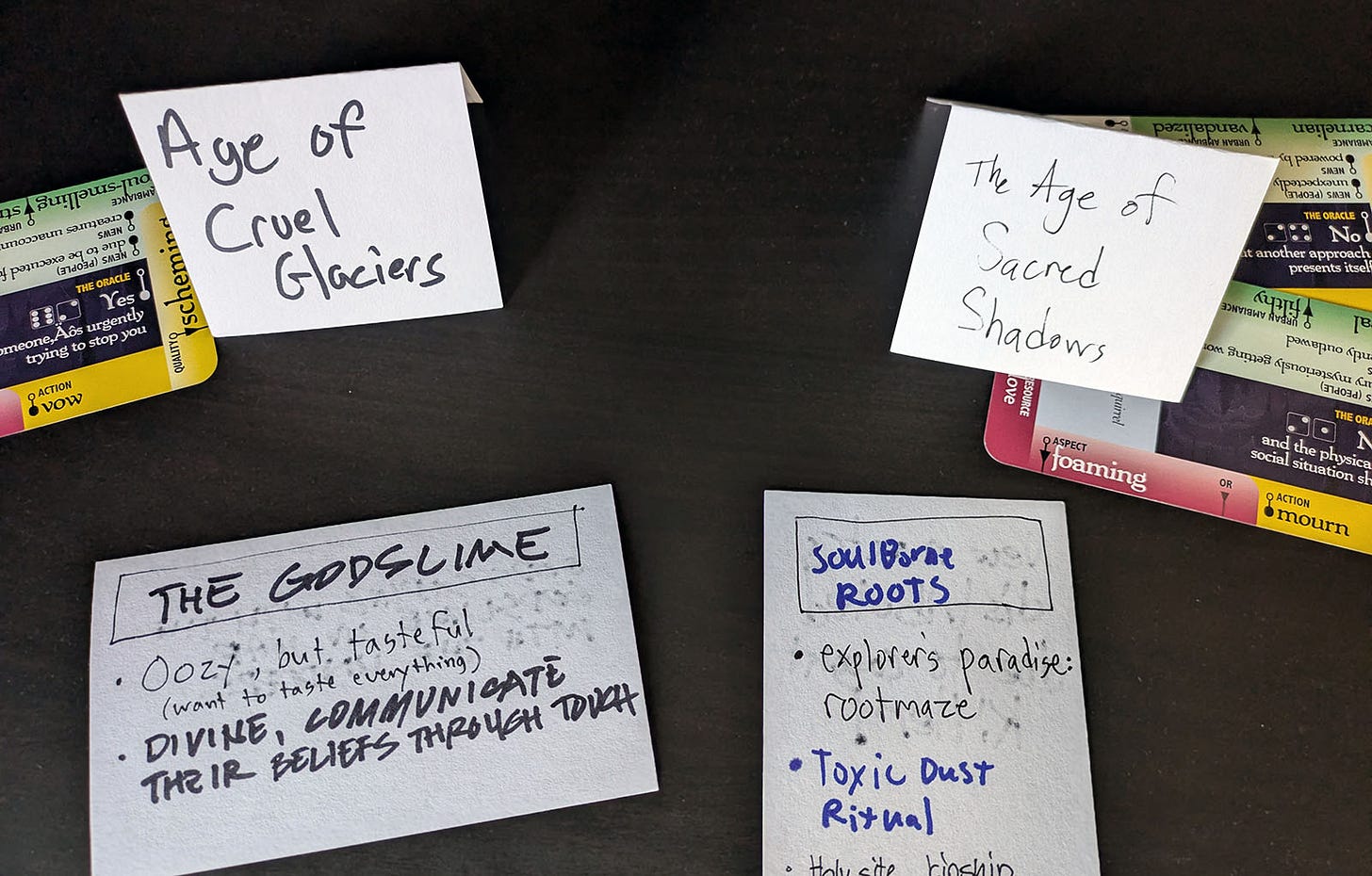
Downcrawl is obviously not the first or only tabletop roleplaying game to incorporate random idea generation—far, far from it!—but it’s perhaps less common to think about how this unique strength of human-powered gaming intersects with procedural generation techniques from digital games. How can we design digital storytelling systems inspired by the strength of the best analog storygames, and how can tabletop games be informed by the decades of parallel work in the digital world? These are the kinds of things I think about late at night. (And I gave a talk diving into similar ideas at NarraScope 2019).
Digital Tools for Analog Games
One fairly obvious way tabletop designers can be informed by digital interactive fiction techniques is by making use of computational tools to test, assemble, and refine a corpus of procedural text. Many roleplaying games feature random result tables, but it’s not uncommon to come across results (especially in combination) that feel off or don’t quite work together: presumably because when thinking up a long list of words in isolation, it’s hard to recall and keep track of all of the ways they might be used. This kind of problem is one procedural narrative folks have thought about extensively.
The core Downcrawl game, for instance, features around 800 combinatorial prompt words across 20+ tables, which can be combined in tens of thousands of permutations; plus, there’s a whole second set of 800 more prompts that can be added on. After making my initial lists for each category, like Location or Reputation, I used a quick tool to rapidly generate possible combinations with each possible pairing of table results, which I could cycle through at the pace of a couple every second. I was looking for combinations with some friction: those where, for whatever reason, my brain couldn’t immediately merge them together. Often this revealed a word that wasn’t quite in the same category as the others in the list, or could only successfully combine with some of them. I’d remove or reframe these rough words, one at a time, until I could cycle through dozens and dozens of random combinations in a row without anything feeling off.
I also wrote a quick Python tool that could check for duplicate, similar, or synonym words across the disparate word lists and sets of word lists, helping me remove the redundancy of lone and lonely or an ocean and a sea. The fact that this script is easy to run means I can have confidence, if I come back to edit a table four months later, that I didn’t already have, say, a graveyard somewhere else.
Finally, I wrote a script for InDesign, where I lay out the Downcrawl Deck cards, that could take a file with the master word lists and shuffle each one into its appropriate positions across two sides of a card deck, plus do a bunch of error checking for words that are too long to fit, contain unexpected characters, or have other issues. This script can, for example, sort each word list by length, generating me a (hypothetical) test card with the longest possible word that can go into each and every category.

This is a bit of privilege I get as a digital designer wading into an analog space: programming chops that often come in useful in surprising ways, even if the game itself has not a line of code at all.
Solo Storytelling
Downcrawl 2E also can be played solo, another connection between this game and the tradition of (mostly single-player) digital text games. Solo tabletop roleplaying games have been increasingly popular over the last decade, spurred on but not entirely due to pandemic isolation: in a poll I did for the campaign, Solo mode was far and away the most popular way backers plan to play the game. It’s interesting to compare solo TTRPG games to digital text games: in both cases, one person alone is using a set of rules, procedures, and descriptive text authored by another to explore a fictional world.
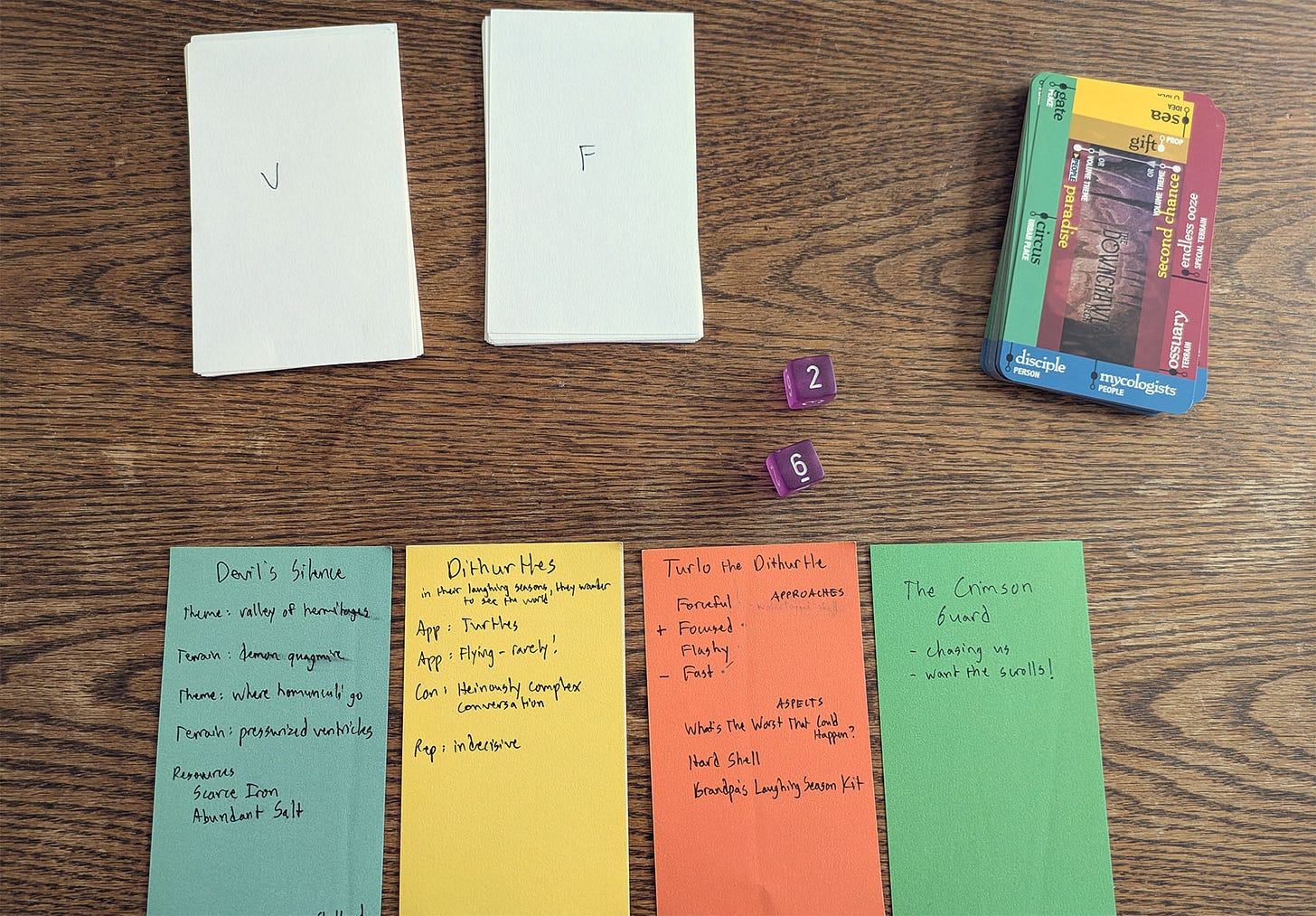
Solo TTRPGs are far more freeform than most digital games, as you might expect—or perhaps not: if you’re picturing something like a Choose Your Own Adventure, modern solo roleplaying tends to be rather more open-ended. Most digital story games, in one way or another, are limiting your mode of interaction to an occasional decision: which of these options should I choose next? A modern single-player analog storygame like Ironsworn is concerned with questions that are far less bounded, like what does the next part of the world look like? or what is the next beat in the arc of my character’s story?
A convention that’s emerged for this style of game is to provide players with an Oracle, a systemic way of answering questions a human gamemaster would normally answer: Is anyone sitting at the bar? What’s behind that door? Does the duchess accept my offer? (Many games will offer separate Oracles for Yes or No questions and those with more varied outcomes.) A simple Oracle might be flipping a coin to get an answer to a Yes or No question, or rolling percentile dice (d100) to get a result from a table with a hundred evocative words. If you’re asking who’s at the bar? and the Oracle gives you the word danger, you might decide there’s an evil-looking ruffian who seems to have noticed you and is smiling unpleasantly…
Most solo TTRPGs also help players answer more foundational questions tied into the genre and tone of the game, from prosaic ones like Can I hit it with my axe? to those concerned with what the game is really about, like Can I resist this temptation? As with any game, analog or digital, the systems provided help answer the meta-question of what sort of stories this game is meant to help you tell. If most of the rules are about combat, it’s probably going to be a story about a hero who has to slay a lot of monsters. Downcrawl is a game about exploring a fantastical underworld, so its core systems help you generate strange places and peoples, take dangerous journeys between them, and have strange and surprising encounters along the way.
(I’ve written up a few of these systems in detail on the Downcrawl Digest blog, such as a narrative Danger system, or one for foraging magical fungus with unpredictable effects.)
A good solo game offers not just Oracles and rules for action resolution, but tools to help you tell a better story than you’d have been able to tell on your own—to effectively collaborate with the creator of the game. These tools might work hard-won storytelling wisdom into rules or heuristics you can follow, even if you don’t fully understand why; they might nudge you towards other parts of the system you wouldn’t explore as often otherwise; they might ask you to think about the world or your character in a new way or from a different perspective. One tool in Downcrawl 2E I’m particularly proud of is deceptively simple: a move called Trading Questions. (A “move” in storygame parlance, following Apocalypse World and its many descendants, is a set of procedures to follow triggered by a condition: when something happens, do these things.)
Trading Questions is triggered when you’re having a conversation with an NPC in Solo Downcrawl, and it’s designed to push you towards making it more meaningful. Here’s the move text in full:
When you’re not sure what to talk about with an NPC,
Ask them a question, whatever you or your character are most curious to know about them. Ideally it’s a big one, skipping the filler and niceties that might lead up to it: how did you get that scar? what are you running from? what happened to the rest of your kind?
If they seem unlikely to tell you, maybe a skill check is required to convince them; on a failure, they may tell an entertaining lie that nevertheless reveals something.
If you think they might tell you, explore the answer in your head: maybe you already know it, instinctively sense what it is, or maybe you want to Ask Inspiration [an Oracle move] for help. Decide how the NPC answers and how your character reacts.
Now, let them ask a question in return. What might they most want to know about your character? Do you know the answer? Invent it if you don’t; and decide whether your character would reveal it, or deflect. You might need to deepen backstory or peel back another layer of your character’s facade to find a truly honest answer, or realize why they won’t tell.
Repeat if necessary.
What fascinates me about storygame moves, as a person who has thought so much about digital narrative games, is that the scaffolding they provide for narrative moments often is almost the inverse from a digital game. If I were writing a Twine or a text adventure with a deep conversation, I’d be thinking about one specific conversation, not the space of all possible conversations. I’d be defining procedures to glue sentence fragments together or alternate greeting texts based on time of day. I would be making sure the player has an appropriate set of interesting dialog options to choose from, not prodding them to invent new pieces of their character’s backstory that justify their response. In an analog storygame, the system builder often isn’t providing the narrative: they’re providing tools for players to bring their own.
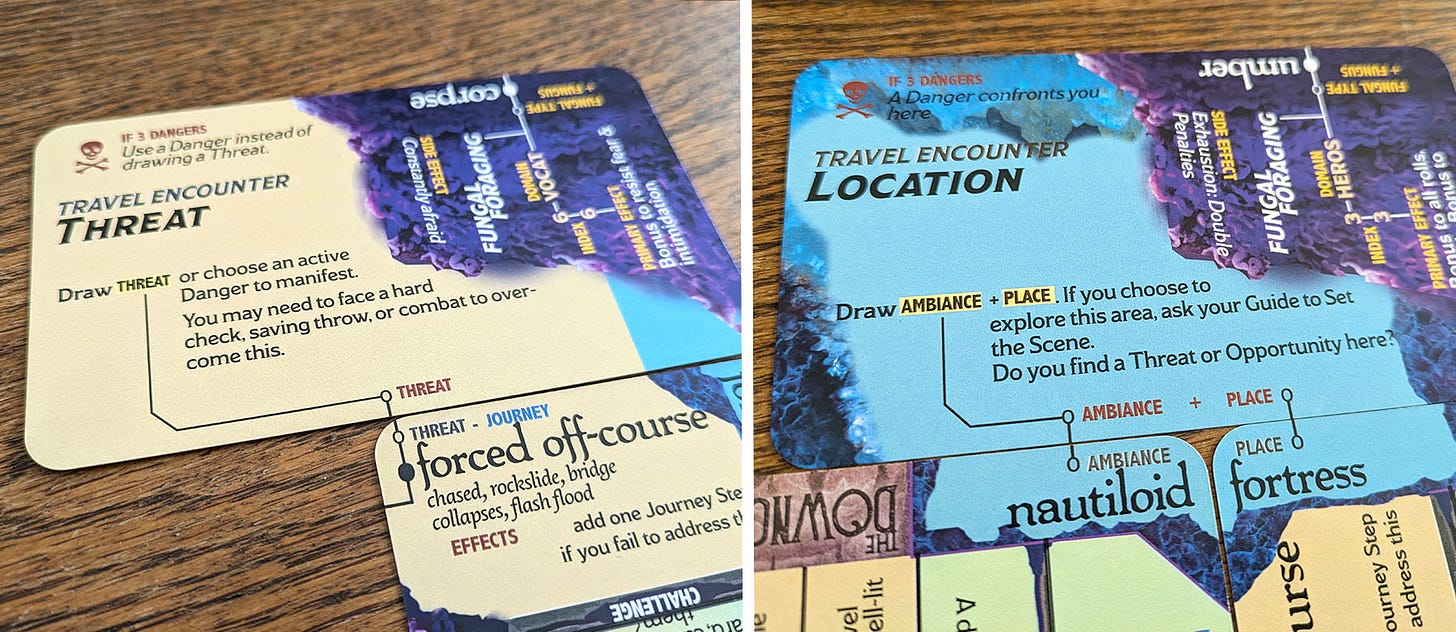
Downcrawl 2E is still crowdfunding for the next few days; if you’re curious, I’d love your support for this latest journey. 50 Years of Text Games (and its companion volume, Further Explorations) are also still available in digital and print editions.
Also of interest: I recently appeared on How Books Are Made (a podcast about the art and science of making books) with Arthur Atwell, creator of the accessible e-book for 50 Years, to talk about what it takes to crowdfund, market, and self-publish an indie book. We had a lovely conversation about what I've learned running five (!) crowdfunding campaigns now. Worth a listen if you’re interested what goes into a campaign behind the scenes!


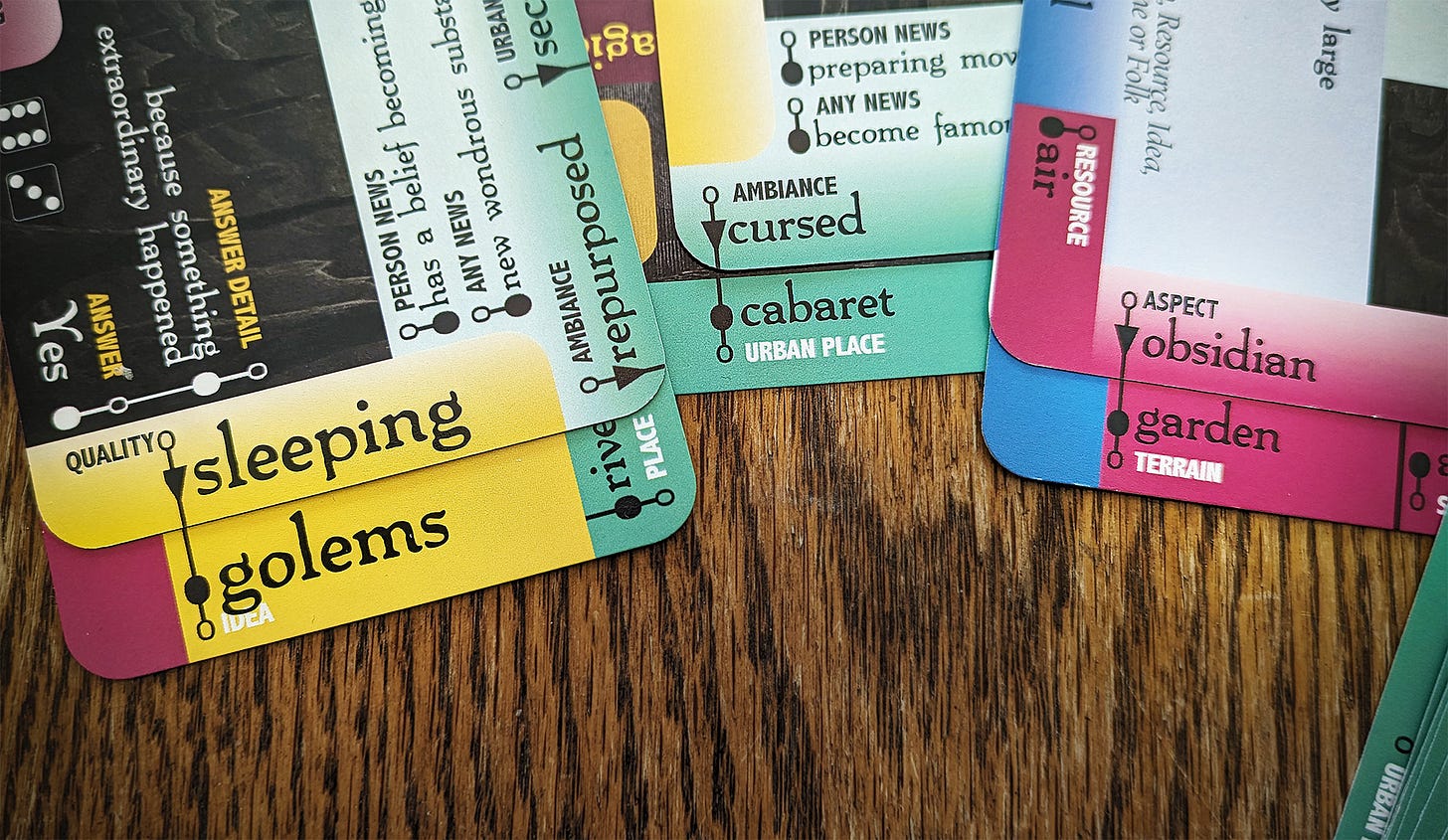

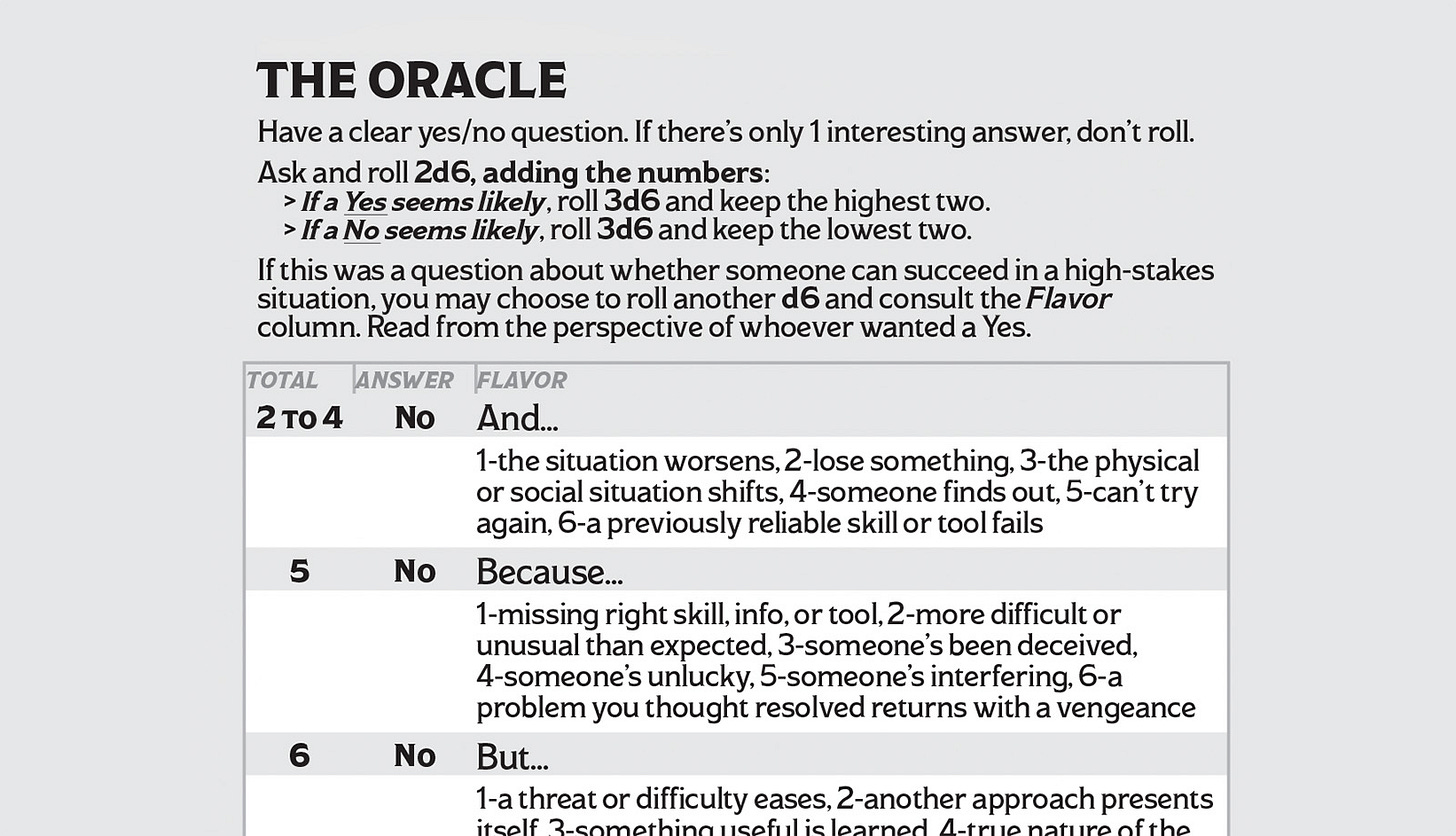
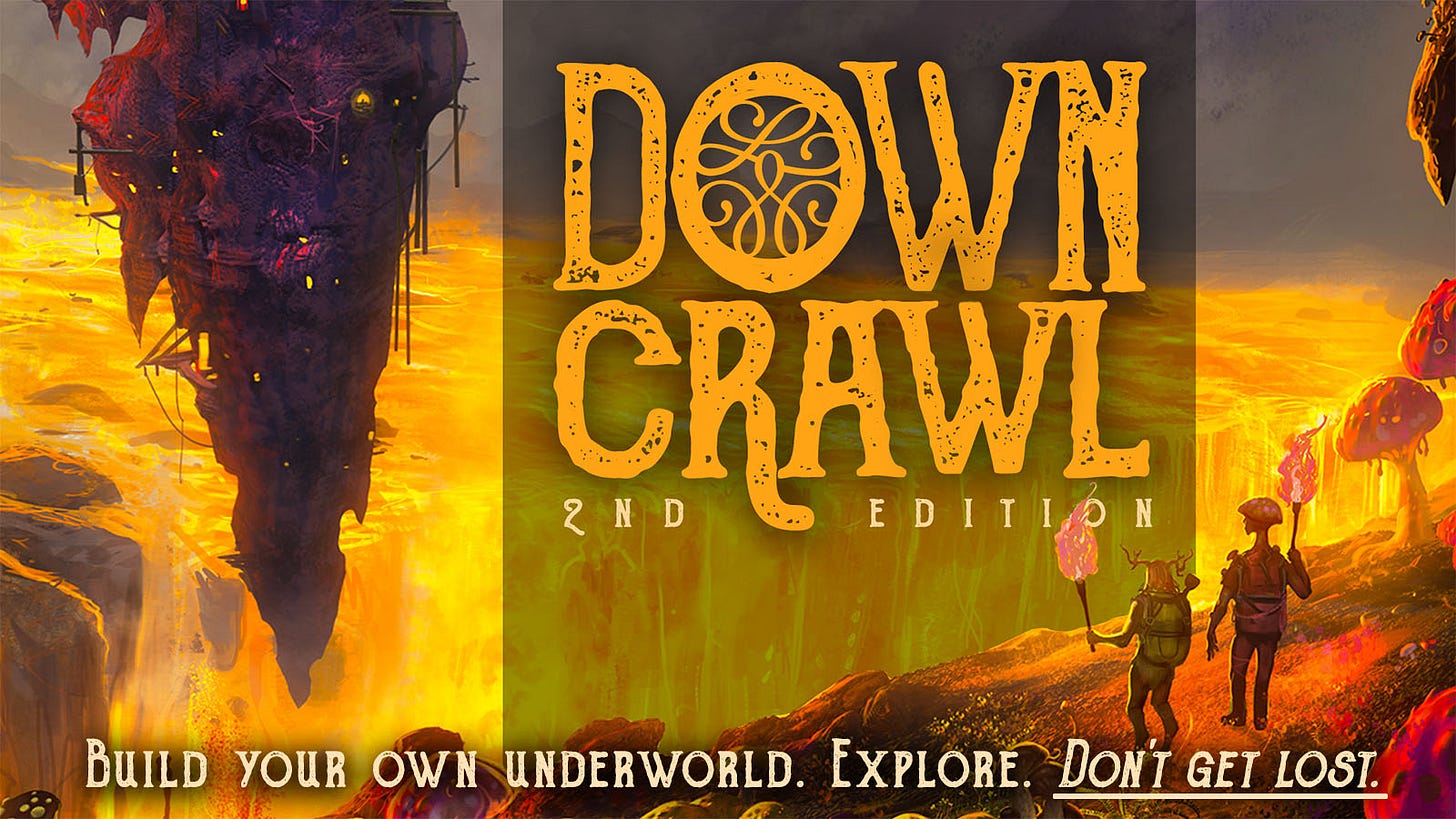
Awesome stuff man, keep doing what you're doing!
Those are some absolutely ingenious systems and a very excellent analysis of the effects they produce and why.